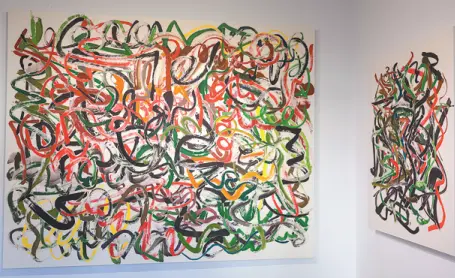500 Brushstrokes by artist Wu Jian'an. The art pieces involve efforts of residents to the Fuliang event. XU HAOYU/CHINA DAILY
On the first day of May, the project Art at Fuliang officially raised its curtain in Fuliang county, Jingdezhen municipality, Jiangxi province.
Twenty five artists from five different countries brought 22 art works and turned the 18-square-kilometer county into a roofless art museum after more than five months of intensive preparation.
These art works were constructed with local resources, built by local workers, and they tell stories about local people.
Fuliang is famous for the quality porcelain and tea it produces. It used to export these two products overseas through the Maritime Silk Road in ancient times.
The tea trade in the county started in the Han-Jin period (220-280), and flourished in the Tang Dynasty (618-907). According to documental material from ancient times, Fuliang's tea attracted people from across China, and the place "produced seven million packets of tea every year, contributing a tax of more than 150,000 guan (the unit of currency back then)".
Bai Juyi, one of the most famous Chinese poets from the Tang Dynasty, wrote in his renowned work Song of the Pipa Player, "the merchant cared for money much more than for me, one month ago he travels to Fuliang to purchase tea; leaving his lonely wife alone in an empty boat, shrouded in moonlight, on the cold river I float…"
(中国网英文)
 简体中文
简体中文

